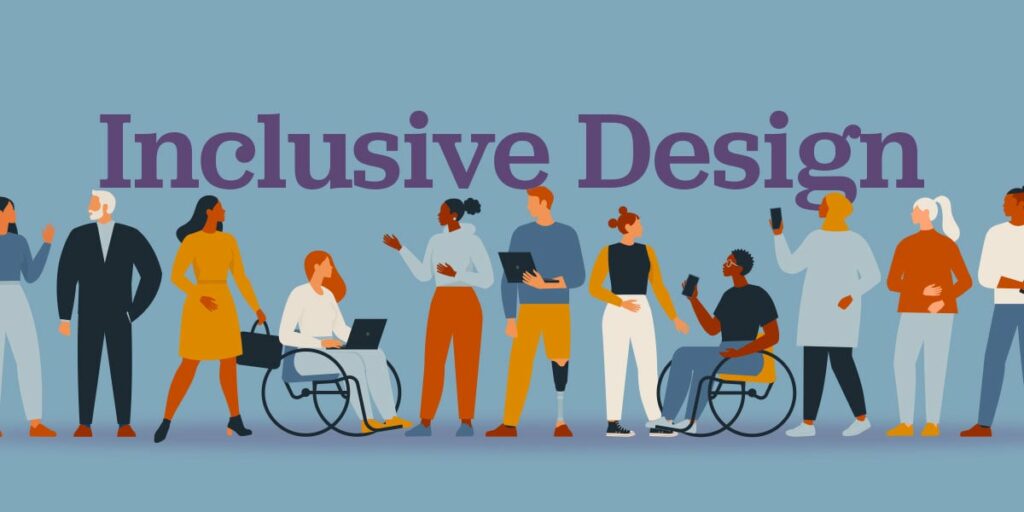
Designing with an understanding of and empowering people from all backgrounds and abilities is known as inclusive design. In inclusive design, a variety of factors may be taken into account, including accessibility, age, culture, economy, education, gender, location, language, and race. The objective is to satisfy as many of their requests as is practical, which goes beyond just expanding the number of clients[1].
In our interactive learning resources, we will ensure that the needs of all learners can be met by doing the following [2]:
- Making a learning objective for all of the students. we will set defined outcomes and goals for the learning period first, then customize to each students’ needs. To better understand the students and identify their different needs, we will develop a questionnaire for them.
- Designing personalized agendas. Using agendas, we can concentrate on the development of each student and design a lesson plan that is appropriate for their needs and skills. Each student will receive a detailed checklist with a large list of assignments that they must complete within two to three weeks.
- Providing students with a variety of content-learning options. In order to help students understand and retain the subject, we will deliver the topic in a variety of methods during class. We will utilize different styles such as visual, auditory, hands-on, and Kinesthetic.
- Providing choices to sustain student engagement. Students will be given the option to select an activity. For guided practice, individuals might choose to participate in a game, role play, individually respond to questions and receive feedback, or practice in a group. They may choose to write a paper, develop a poster or model, a podcast or video, or give a presentation to show that they grasp a subject. Making decisions enables individuals to connect with the material in a way that piques their curiosity.
One of the learning activities outlined in our blueprint design is an interactive oral exam that will be given at the conclusion of the semester to determine the students’ level of topic knowledge and comprehension. The oral test could create some potential barriers for student success including:
- Panic attacks or anxiety. Maintaining composure and giving their best effort throughout oral exams is one of the toughest problems students encounter. Despite the fact that they could do poorly on the test as a result of this, the student may have far more in-depth understanding of the subject[3]. This problem might be resolved by giving students the option of taking a take-home exam in place of the oral exam, which would allow them to demonstrate their comprehensive knowledge and comprehension of the topic.
- Scarcity of technology. Some students might not be able to access WiFi or computers to complete the test. This issue can be resolved by students borrowing computers from the library and reserving a quiet space there to take the test.
References:
[1] https://uxdesign.cc/3-principles-of-inclusive-design-and-why-it-matters-970b10a17982 [2] https://www.wikihow.com/Meet-the-Individual-Needs-of-Students [3] https://www.english.com/blog/cambridge-first-and-advanced-beat-oral-exam-nerves/#:~:text=If%20nerves%20get%20too%20much,of%20the%20question%20or%20exam.
Hi Abdul,
Thank you for sharing your blog, it is very informative. The two potential barriers you pointed out are points that should be addressed by universal design. In the case of an online class that teaches Parkinson’s disease as a topic in an hour and a half, what kind of universal design is possible for hearing-impaired students?
Rikuto
Hi Abdul,
I really enjoyed reading your blog post for this week. I really liked your thoughts on inclusive design and your plans to make your interactive learning resource accessible for all learners. Your ideas for a specialized agenda for different learners really highlights the inclusive factor for your interactive resource. After reading your blog post I have now gained valuable insight on how to make an inclusive environment.